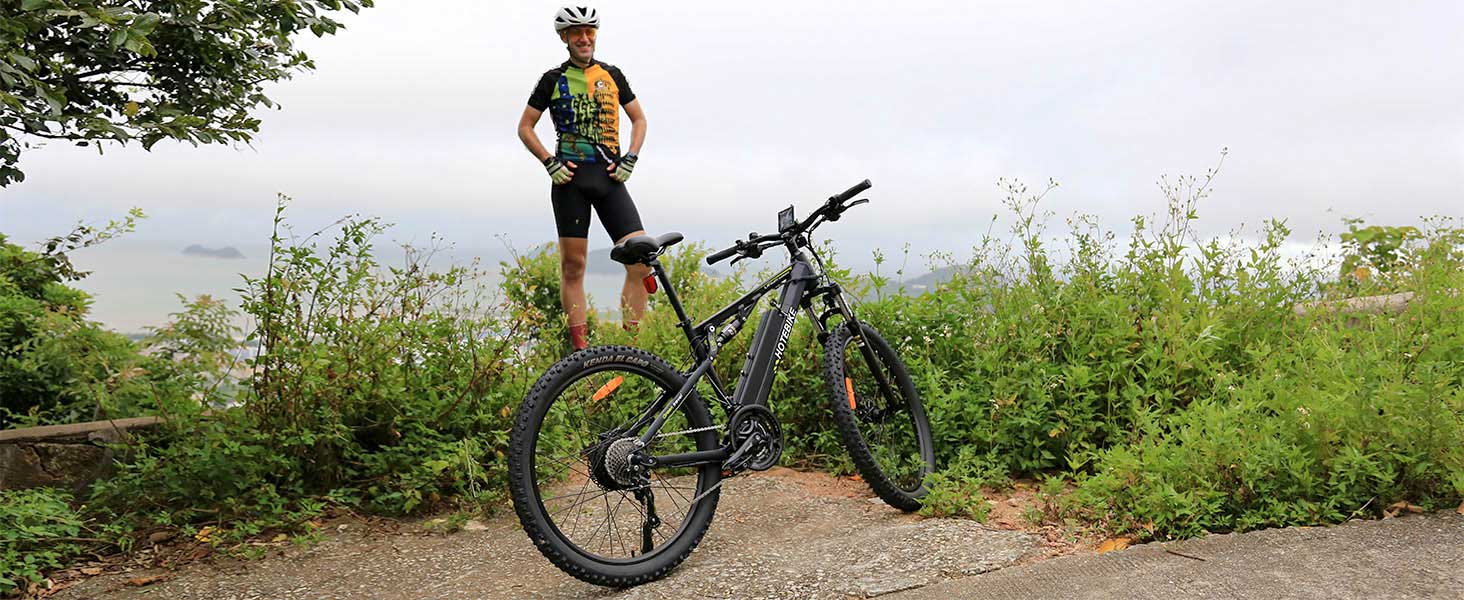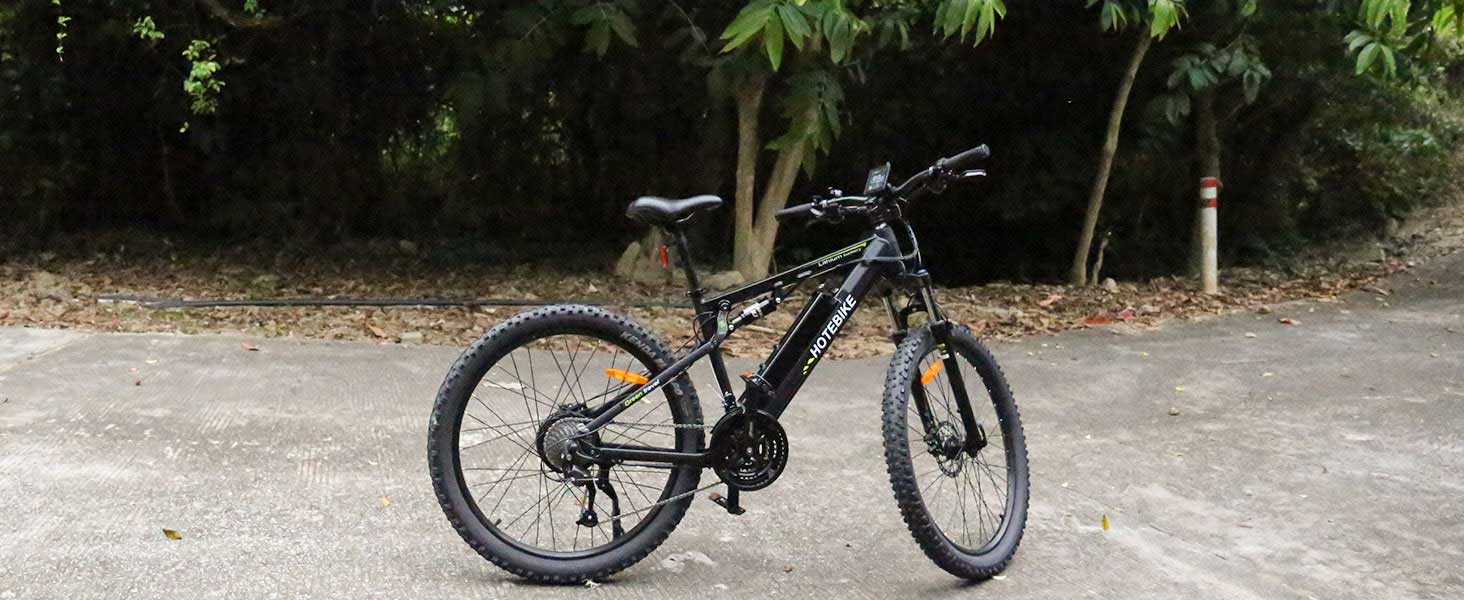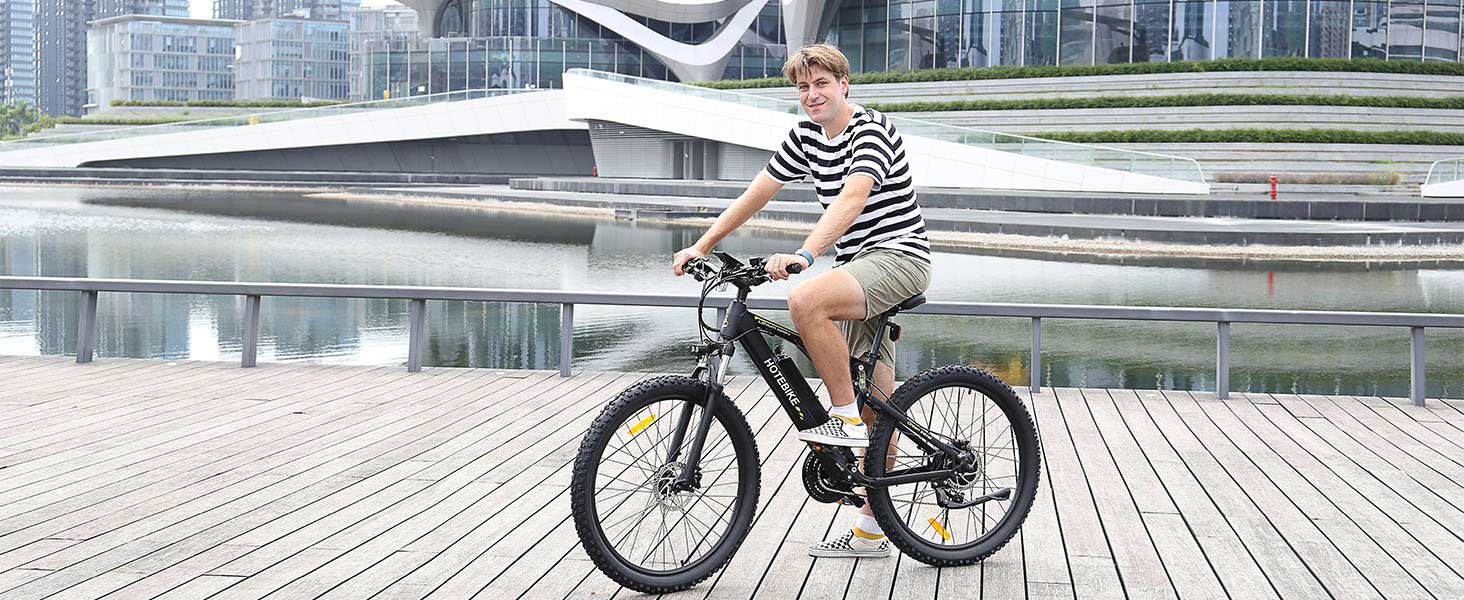To combine the best of two tire worlds – the classic MTB and the fat bike – is the goal of the 27.5+ tire size that entered the market. HOTEBIKE now launches its tire line in the more “moderate” 27.5 x 2.6-inch size.
The right mountain bike tire width will help you ride faster, feel more confident, and have more fun. So what tire width should you choose? We make it easy and explain what the perfect width is and why.
Tires are always a hot topic in mountain biking. Things like tread patterns, rubber compounds, and casings have a massive impact on how your bike performs. Then there’s the matter of tire width. With better technology, tire manufacturers have been making mountain bike tires wider and wider. The skinny 2” tires of yesteryear have given way to a huge selection of tires that can get as wide as 3”.
So how do you choose tire width for your mountain bike? Can you go too wide? The “right” tire width can be a confusing and contentious topic. We’ll boil it down to what’s popular/what works best, and give you the practical advice you need to pick the perfect tire.
Are wider MTB tires better?

Are wider tires better? The simple answer is: Yes, usually. A more nuanced answer would be that it depends on your bike, riding style, and terrain, but most the industry is starting to settle on what the ideal tire width is.
| Wide tire PROS | Wide tire CONS |
|
|
Wider tires have a bigger contact patch, which gives you more traction off-road. Because they have more volume, you can run lower tire pressures than you can on a narrower tire which also improves traction as well as comfort. As a result, wider tires can give riders more confidence when braking and cornering, and take some of the sting out of rough trails. If you’re looking for an upgrade that will give you the most performance for the least amount of money, switching to wider (and stickier) tires will give you the best bang for your buck.
There are a few potential downsides to wider tires. The most biggest is that a wider tire will be heavier than a narrow tire of similar construction. Generally, I like to say that bike weight doesn’t matter, but if you’re going to count grams, the rotating weight of your wheels and tires is where it matters most. A heavier tire will require more energy to accelerate, making tough climbs just a little bit tougher.
Older bikes might not clear modern wide tires. It’s a good thing this frame is covered in protective tape because it barely fits these 2.6″ tires.
Wider tires reduce the clearance for stones, mud, and other trail debris. They can even rub the frame. In the quest to squash wider and wider tires into frames with limited clearance, plenty of riders have experienced the agony of damaging their frame or paint. Always check the max tire width recommended from your bike manufacturer. Ideally, you want a minimum of 4-5mm of clearance between your tire and any part of the frame. More is better. If you plan to max out tire width on your bike, be prepared to see more marks, chips, and scratches in your bike’s rear triangle.
The final point — feel — is a matter of personal preference. Some riders just don’t like the way overly wide tires steer or corner. Some riders find that wide tires feel vague or mushy. Sometimes it’s because wider tires use lighter casings to keep weight down, which won’t provide the cornering support of a stiffer sidewall. Sometimes it’s because wider tires have wider knob spacing, which changes a tire’s behavior when leaning transitioning onto the cornering knobs. And sometimes, it’s related to rim width. Wider tires need wider rims to support them. If you want to go wide, it’s best to make sure your wheels have at least a 25mm internal rim width, with 27-33mm being ideal.
All that being said, the simplest advice I can give new-to-intermediate riders is to just fit the widest tires that their frame or wheels will allow. For most riders, the gains in traction, comfort, and confidence will far outweigh any potential downsides. Most riders likely won’t even notice the extra weight while riding because the benefits will be so pronounced.
Can you run different tire widths on the front and rear?
A common tactic many riders use is putting a wider tire on the front and a narrower tire on the rear. There are two reasons for this. First, most mountain bike forks can clear much larger tires than the frame can. Second, increasing tire volume makes a bigger difference at the front of the bike than in the rear. Many riders will run a wider front tire for more grip and comfort and pair it with a narrower rear tire that feels lighter and easier to pedal.
Introducing our latest innovation, the 27.5-inch * 2.6-inch tire electric bicycle! This remarkable upgrade surpasses the commonly used 26-inch * 1.95-inch tires, with a significant improvement in tire width.

 hotebike
hotebike
